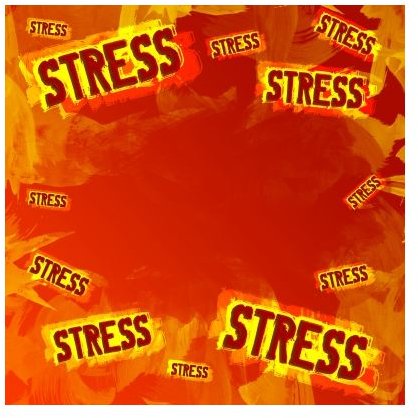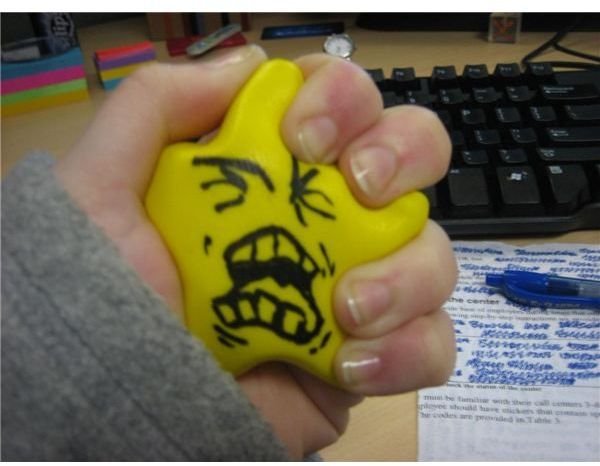A Review of Stress Management Techniques for OCD
OCD and Stress
Obsessive compulsive disorder (OCD) is an anxiety disorder where the individual suffers from obsessive thoughts and compulsive actions such as cleaning, checking, counting, or hoarding that they find difficult to overcome. It is a potentially disabling condition, which left untreated may persist and destroy the person’s capability to function at work, school, or in the home.
People suffering from this condition generally have low stress tolerance, and as such, might experience distress frequently. The response triggered by compulsive obsessions releases chemicals into the bloodstream that create a heightened state of psychological arousal.
Normal pre-emptive methods such as proper sleep of about eight hours a day, regular exercises of about 30 minutes a day, joining social support groups to prevent feelings of isolation, refraining from alcohol, avoiding procrastination, and avoiding self-blame rarely help to diminish OCD induced stress.
Deep Breathing Exercises
Deep breathing exercise, also known as belly-breathing is an effective technique to alleviate stress caused by compulsive obsessions. This technique involves taking full, cleansing breaths from the abdomen, and inhaling as much fresh air as possible to the lungs, to allow for greater intake of oxygen into the body. Consult a qualified medical practitioner for more details such as the times, and other considerations when undertaking this exercise.
People under stress usually take rapid, shallow breaths directly from the chest. This type of thoracic or chest breathing cause lower oxygen levels and greater carbon dioxide retention compared to the normal diaphragmatic or abdominal breathing. The resultant low oxygen and high carbon dioxide levels in the blood cells cause increased heart rate, dizziness, muscle tension and other physical sensations, triggering response that manifests as anxiety and panic attacks.
Mindfulness
Mindfulness is becoming fully aware of the present moment without judgmental thoughts that dwell in the past or project to the future. Meditation is one way of attaining mindfulness, to keep the mind fully engaged in the present, noticing thoughts without judging or pushing them away.
It is possible to combine mindfulness with deep breathing meditation and other exercises or activities. Ways to do so include:
- focusing on each part of the body when deep breathing without labeling the sensations as good or bad.
- concentrating on the anxiety, fears, or worry thoughts that come to the mind when engaging in walking exercise and resisting the urge to relate such thoughts with future worries or experiences. You are just allowing the thoughts to happen.
- focusing full attention on food during mealtime, without talking to others, watching television, or engaging in any other activity
Progressive Muscle Relaxation

A popular stress management technique for obsessive compulsive disorder (OCD) is progressive muscle relaxation. Established by Edmund Jacobson in the 1930s, this technique aims at reliving the underlying muscle tensions that occur when stress sets in, on the premise that physical relaxation naturally leads to mental calmness.
The exercise is simple and involves tensing or tightening followed by relaxing one muscle group at a time. It can accompany deep breathing exercise, by clenching all the muscles in a muscle group when inhaling and holding them for 10 to 20 seconds before slowly exhaling and releasing the tension. The muscle groups to involve are face, chest, abdomen, right arm, right forearm and hand, left arm, left forearm and hand, buttocks, right leg, lower right leg and foot, and lower left leg and foot. A minimum of two cycles of tension-relaxation for each muscle group is required in one session for maximum effectiveness. However, consult a certified medical practitioner for more details and instructions specific to one’s state.
Other Methods
Other effective stress management techniques for OCD are:
- guided imagery or visualization, where the patient imagines a scene where he or she feels at peace
- yoga, which combines deep breathing with a series of moving and stationary poses
- tai chi, or a series of self-paced non-competitive slow, flowing body movements that emphasize concentration, relaxation, and the circulation of vital energy throughout the body.
- massage therapy as a means to soothe body muscles and induce calmness
- trauma-focused cognitive behavioral therapy (TFCBT), which entails learning how to reclaim thoughts, feelings, and behaviors
- eye movement desensitization and reprocessing (EMDR), a physiotherapy approach that enables patients to reclaim emotional control. The therapist makes rhythmic movements of fingers, which the eye follows. In the process, the patient remembers the blacked out details and sensations related to the trauma.
- Extreme cases may require low doses of anti-anxiety medication or anti-depressants to supplement other therapy
The techniques to cure stress resultant from compulsive obsessions allow the brain to turn off the psychological arousal, reduce heart rate and blood pressure, and increase energy and focus. This helps the person improve problem-solving abilities and boost productivity, allowing an active and healthy lifestyle.
References
- NYU Langone Medical Center. “Obsessive-compulsive Disorder.” https://www.med.nyu.edu/content?ChunkIID=11646.
- Stress Relief. “Stress Relief Techniques For OCD.” https://www.stressinst.com/ocdstressrelieftechniques.html.
- University of Maryland Medical Center. “Anxiety disorders: Psychotherapy and Other Treatments.” https://www.umm.edu/patiented/articles/what_psychotherapeutic_other_non-drug_approaches_anxiety_disorder_000028_8.htm./
- HelpGuide.org “Obsessive-Compulsive Disorders.” https://helpguide.org/mental/obsessive_compulsive_disorder_ocd.htm
- MedicineNet.com. “Progressive Muscle Relaxation for Stress and Insomnia.” https://www.medicinenet.com/script/main/art.asp?articlekey=47281
Image Credit
- Page 1: flickr.com/Katy Warner
- Page 2: freedigitalphotos.net/Danilo Rizzuti
